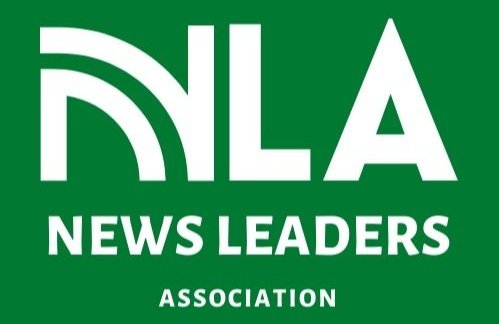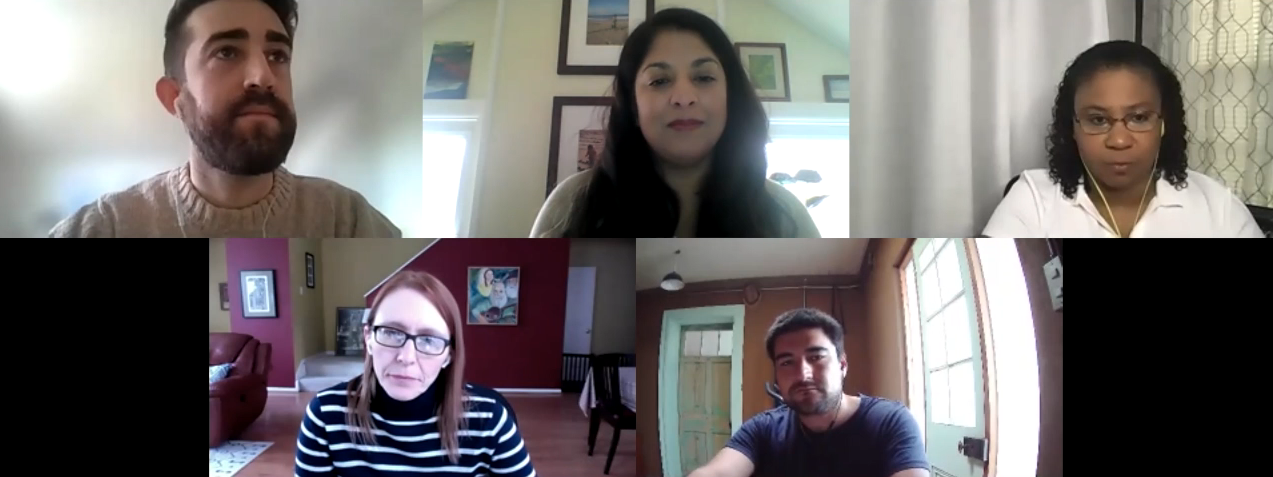Recap: Tackling Misinformation: Lessons from 2020 for 2021
From the pandemic to the election, 2020 was rife with false claims and distorted narratives about critical issues. The challenges of mis- and disinformation are growing while newsroom resources decline. So how can your newsroom make the best use of the resources you have to respond in service to your communities?
On April 16, NLA in partnership with the American Press Institute held a discussion with journalists from Detroit Free Press, Black Girl Media, Documented and Associated Press about the tools and strategies they deploy to uncover, understand and address the spread of false information.
The panel was moderated by Andrew Rockway, consultant to the American Press Institute on government and democracy coverage and local approaches to audience engagement.
Here are takeaways shared by our panelists.
Karen Mahabir, head of fact-checking and misinformation coverage at The Associated Press:
In 2020, there was so much misinformation around many topics: the COVID-19 pandemic (claiming it was a hoax); the presidential election (voting and fraud claims); statehouse protests and lockdown measures; Black Lives Matter movement; conspiracy theories (like QAnon); immigration.
AP's response was to focus on transparency, explanatory journalism, pointing people to credible sources and providing as much context as possible.
The first questions she asks when trying to debunk a false claim: Was this claim made by a public official or somebody whose words carry weight? Is it a claim that exists in the wild, or is it connected to a larger false narrative? Has it cross-pollinated across social platforms? Could it cause harm or lead to actions like someone not voting or someone ingesting something dangerous?
They were initially looking to social platforms like Facebook, Twitter and YouTube but expanded that in 2020 to include TikTok, Weibo, Parlour, Telegram, Reddit, etc. This helped them determine what was gaining traction before it blew up.
She also paid attention to what was happening offline — what her friends or family members were saying, and questions that came up in conversations.
It's also really important to consider the format of the false claim. It wasn't just in text anymore. It was spreading to photos, videos and even memes.
Question everyone and be skeptical — even/especially of elected officials
Shana Black, founder and chief content producer for Black Girl Media. In 2020, Shana was a Local News Fellow for First Draft:
She was focused mostly on misinformation around the election and the Census.
At First Draft, Shana worked to help enable and teach their communities to fight back against misinformation. The goal was to debunk claims and share that information with the communities being affected by those claims. If it wasn't via First Draft’s platforms, then they needed to determine who could help. She worked to equip folks with the knowledge of what to look for "so that way there's more people fighting the (spread) of misinformation."
Shana spent time going down the rabbit hole on each social platform to find out what was trending, where the "data voids" where and what people were worried about — keeping in mind a lot of misinformation was shared via text message and direct messages.
She found a lot of misinformation was happening offline, too — like false claims on flyers in her neighborhood.
Her team encouraged people to pause before they shared something and look into it first in an effort to slow the spread and flatten the curve of misinformation.
It's essential to know your community because misinformation presents differently across different communities. "We serve different audiences and have to present (context) in different ways."
Advice to news leaders: Listen, realize the impact of your reporting and consider if it's helping or ultimately hurting. For example, the George Floyd video. Showing that over and over again can be harmful, especially to someone who looks like him. Make sure your coverage is not inadvertently traumatizing your audience.
Misinformation is not going away. It can continue to show up in places like school board meetings, neighbor disputes, the NextDoor app. "If you're not sure where to start, start with… service journalism and explainers."
Anjanette Delgado, senior news director for digital at the Detroit Free Press:
At Detroit Free Press, they created an "always-on micro-beat" around election misinformation for about six weeks. "We saw things that bubbled up ... in areas where we would not have known what we were seeing if we hadn't been looking for them online first."
Her team wanted to be able to explain to their community about how misinformation moves and where it comes from (using the terms "providence" and "networks").
Simply saying something was “not true” wasn't enough for many readers. Instead they tried to provide opportunities for people in the community to fact check the misinformation themselves.
It's important to look not only at what is being said, but also how it's being said and the word choice you use. It should reflect the language and words used by a particular community or audience.
Take time to be in these groups and just listen, regardless of your beat. If you aren’t understanding what’s going on around you, then you might not correct the record when you cover something but instead make things worse.
Nicolás Rios, Audience Editor at Documented:
At Documented, they cover immigrant communities and launched a newsletter on WhatsApp. They got a lot of messages back that signaled to them there was misinformation circling in their communities, especially Latino communities in New York City
They found the misinformation being spread in Spanish was totally different from what was being covered in English media. For example, they heard a lot about "magical cures" for COVID and fake claims about free money or resources that were actually scams.
Undocumented Latinos especially were being targeted with misinformation because of how badly hurt they were by the pandemic and lockdowns.
Vaccines were a big source of fear for undocumented folks. They were concerned about having to provide their personal information in order to be vaccinated and about the safety of the vaccines. Misinformation claimed that their communities were essentially guinea pigs for the vaccines.
Their WhatsApp newsletter came out of research done on their target audience. They wanted to understand what was missing from their current product and what folks' main concerns were. For example, many were concerned about privacy so it wasn't a WhatsApp group, but instead it was direct messaging within the app.
They focused on making it really personal, starting messages with “Hey, it’s Nico” and sharing photos. "When they know that it's a human being (not just a brand), you create trust." Trust isn't inherent for journalists; you need to work to develop it.
Show your humanity. Don't be afraid to say, "We are human beings. We don’t know it all, but we’ll report on it and help you understand what we do know." Combat the idea that journalists know it all.
Andrew closed out by asking each panelist for tips on how a journalist can deal with the emotional and mental strain of covering misinformation and the targeted harassment that can happen as a result.
Anjanette: Take time up front to address security measures. She helped their reporter clean up her social media accounts to hide personal information and add two-factor authentication. The Freedom of the Press Foundation was helpful with this. Also, keep in mind you need a safety net to do this work. "Don’t let somebody swim in this for too long by them themselves."
Shana: Make sure that folks are OK while doing this work. Even after events (like the election) are “over,” people can fall into a depression because it's a lot to go through. "Give (them) some space to just take care of themselves because it can be scary and overwhelming and burnout is real."
Karen: Talk with your reporters individually. Talk as a group. Bring in outside experts for sessions to address the difficult feelings and experiences.
Nicolás: Support your colleagues and employees. And take time off when you can. It's OK to say that you're having a hard day and you need a break. "It's something that we should all take as a standard in the industry."
Sign up here to receive invites to future NLA events.
In case you missed this discussion, you can watch the full video here.

